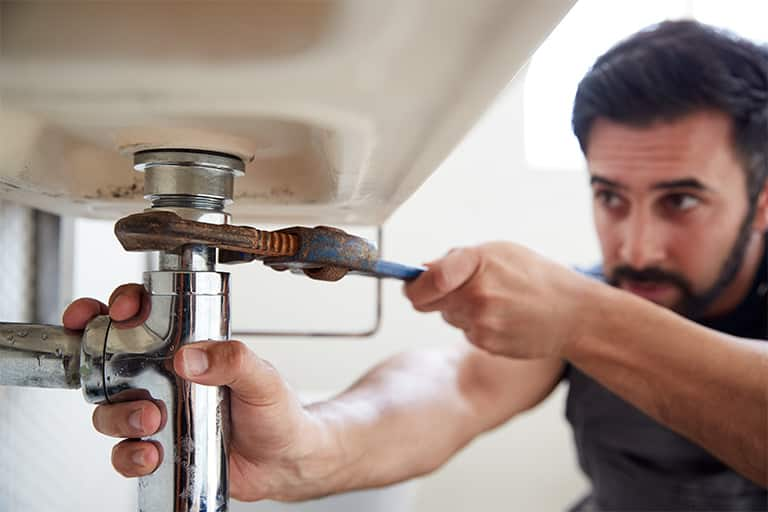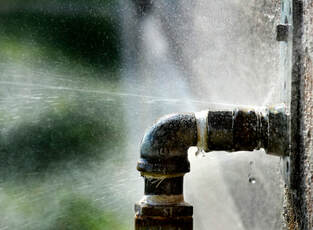We have stumbled on the article about Hacks to detect leaks down the page on the net and thought it made sense to write about it with you here.

Early detection of leaking water lines can mitigate a prospective disaster. Some tiny water leaks might not be noticeable.
1. Take A Look At the Water Meter
Every residence has a water meter. Inspecting it is a surefire way that assists you find leaks. For beginners, shut off all the water sources. Make certain nobody will flush, use the tap, shower, run the washing device or dish washer. From there, go to the meter and also watch if it will alter. Since no one is using it, there need to be no activities. If it moves, that shows a fast-moving leakage. If you discover no changes, wait a hr or 2 and check back once more. This suggests you might have a slow-moving leakage that might even be below ground.
2. Inspect Water Consumption
Examine your water expenses and also track your water intake. As the one paying it, you must notice if there are any type of disparities. If you detect sudden changes, despite your consumption being the same, it implies that you have leaks in your plumbing system. Keep in mind, your water expense should fall under the same array every month. A sudden spike in your bill indicates a fast-moving leakage.
On the other hand, a steady rise on a monthly basis, despite having the exact same routines, shows you have a slow leak that's likewise gradually rising. Call a plumber to thoroughly inspect your building, particularly if you feel a warm location on your floor with piping beneath.
3. Do a Food Coloring Examination
When it comes to water usage, 30% comes from commodes. If the shade in some way infiltrates your bowl during that time without flushing, there's a leak in between the tank and dish.
4. Asses Outside Lines
Don't neglect to examine your outdoor water lines too. Ought to water leak out of the link, you have a loosened rubber gasket. One small leakage can lose tons of water and spike your water bill.
5. Examine and Analyze the Situation
Property owners ought to make it a routine to inspect under the sink counters as well as even inside cabinets for any bad odor or mold development. These two red flags indicate a leakage so punctual focus is called for. Doing regular assessments, even bi-annually, can save you from a major trouble.
Check for stainings and damaging as a lot of appliances and also pipelines have a life span. If you think leaking water lines in your plumbing system, do not wait for it to intensify.
Early detection of dripping water lines can reduce a prospective disaster. Some small water leakages may not be noticeable. Inspecting it is a surefire method that aids you discover leaks. One little leak can lose loads of water and also surge your water expense.
If you believe dripping water lines in your plumbing system, don't wait for it to intensify.
WARNING SIGNS OF WATER LEAKAGE BEHIND THE WALL
PERSISTENT MUSTY ODORS
As water slowly drips from a leaky pipe inside the wall, flooring and sheetrock stay damp and develop an odor similar to wet cardboard. It generates a musty smell that can help you find hidden leaks.
MOLD IN UNUSUAL AREAS
Mold usually grows in wet areas like kitchens, baths and laundry rooms. If you spot the stuff on walls or baseboards in other rooms of the house, it’s a good indicator of undetected water leaks.
STAINS THAT GROW
When mold thrives around a leaky pipe, it sometimes takes hold on the inside surface of the affected wall. A growing stain on otherwise clean sheetrock is often your sign of a hidden plumbing problem.
PEELING OR BUBBLING WALLPAPER / PAINT
This clue is easy to miss in rooms that don’t get much use. When you see wallpaper separating along seams or paint bubbling or flaking off the wall, blame sheetrock that stays wet because of an undetected leak.
BUCKLED CEILINGS AND STAINED FLOORS
If ceilings or floors in bathrooms, kitchens or laundry areas develop structural problems, don’t rule out constant damp inside the walls. Wet sheetrock can affect adjacent framing, flooring and ceilings.
https://www.servicemasterbyzaba.com/blog/how-to-detect-water-leakage-in-walls/

Do you enjoy more info about Detecting hidden plumbing leaks? Post a remark directly below. We'd be interested to find out your responses about this blog post. We are looking forward that you come back again in the future. Those who enjoyed reading our blog post please make sure you remember to share it. I take joy in reading our article about Locating water leaks.